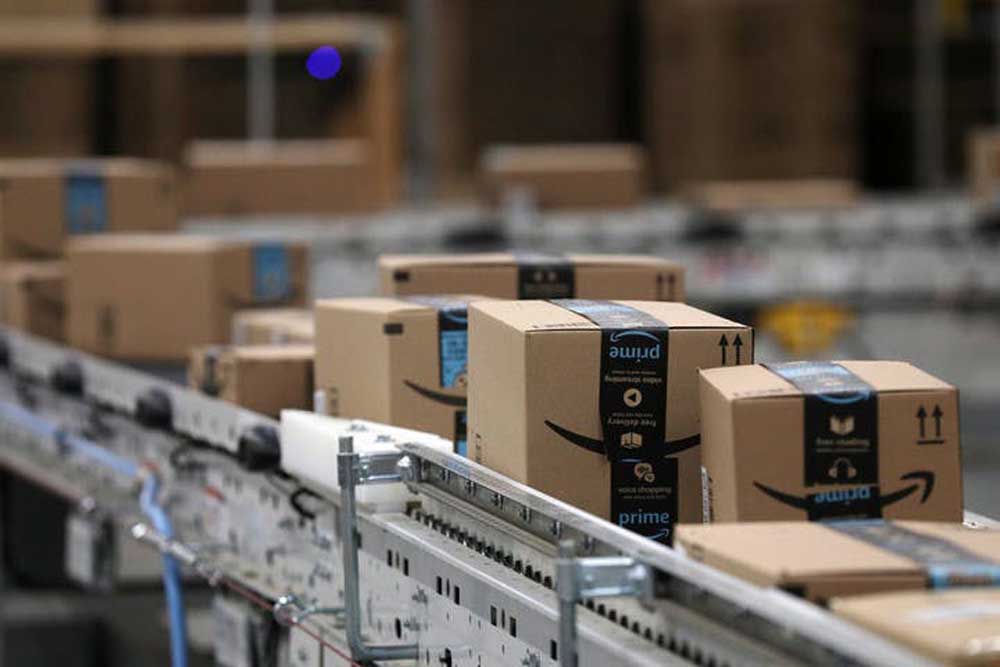Prime Day has critics, but Amazon scores big
Published 12:00 am Friday, July 19, 2019

- Packages passed down a conveyor belt before receiving a shipping label at Amazon in Shakopee, Minn. (Anthony Souffle/Minneapolis Star Tribune/TNS)
SEATTLE — It was the biggest Prime Day ever — because it always is, and this time it went on for two days. It was also the noisiest, as Amazon’s critics and competitors tried to co-opt the retailer’s annual summer sale Monday and Tuesday for their own goals.
Amazon did not sit idle, however, countering its critics in real time even as it touted deals on millions of items to its most loyal customers.
The drama took the form of the first strike at an Amazon warehouse in the U.S.
Amazon said the protest included only 15 workers, though many more expressed support online and in person; larger work stoppages in Germany; rallies at other company locations, including its Seattle headquarters; and messages of support for strikers from politicians, including presidential candidates such as U.S. Sens. Bernie Sanders and Kamala Harris.
The size and success of Amazon and its Prime sale are what create the platform for criticism, said Eric Schiffer of Reputation Management Consultants, which provides crisis communication services to major brands and celebrities.
“The media will follow (Prime Day) like a magnet and then if you add controversy, these groups and advocacy organizations know they’ll capture a share of voice,” he said.
Schiffer said there had been “rumblings” from Amazon critics around past Prime Days — European unions, in particular, have held actions around the sale — but “nothing like this year,” which he described as an organized effort to hijack of the event for political purposes.
Amazon, with former Obama administration press secretary Jay Carney as its head of global corporate affairs, had its communications strategy in place. And it looked “far more like a political organization than like a brand,” Schiffer said. “They’re aggressive, and they’re proactive, and they don’t want to be defined. Not unlike what you’d see in a presidential campaign,” he said.
It’s difficult to determine what, if any, impact the strikers, the politicians and the attention paid to them had on sales.
Amazon, as it has after previous Prime Days, touted just how big a sale it was: 175 million items purchased; more sales on July 15 and 16 than during the two capital-letter shopping days of the holiday season, Black Friday and Cyber Monday; $2 billion in sales by small and medium businesses using Amazon’s platform to reach customers.
But as in prior years, the company’s public accounting of Prime Day provides little detail on total sales or year-over-year growth.
On Tuesday, Jeff Bezos tethered himself atop the Spheres at the company’s Seattle headquarters and held a “Thank You” sign over his head, acknowledging the customers and workers involved in the sale.
Large Amazon competitors, which have increasingly piggybacked on Prime Day with their own summer promotions, benefited with a 72% boost in sales compared to an average Tuesday, according to Adobe Analytics.
Some smaller ones that tried to take advantage of anti-Amazon sentiment stirred up by the strikes and protests also reported records: Seattle-based Libro.fm, an audio books competitor to Amazon’s Audible service, said it had a record number of new sign-ups during the first two days of the week.
As the Prime sale wound down Tuesday, Amazon issued a statement noting the size of a strike at its Shakopee, Minnesota, facility — “roughly 15 associates participated” — relative to the 1,500-person full-time work force at the fulfillment center.






